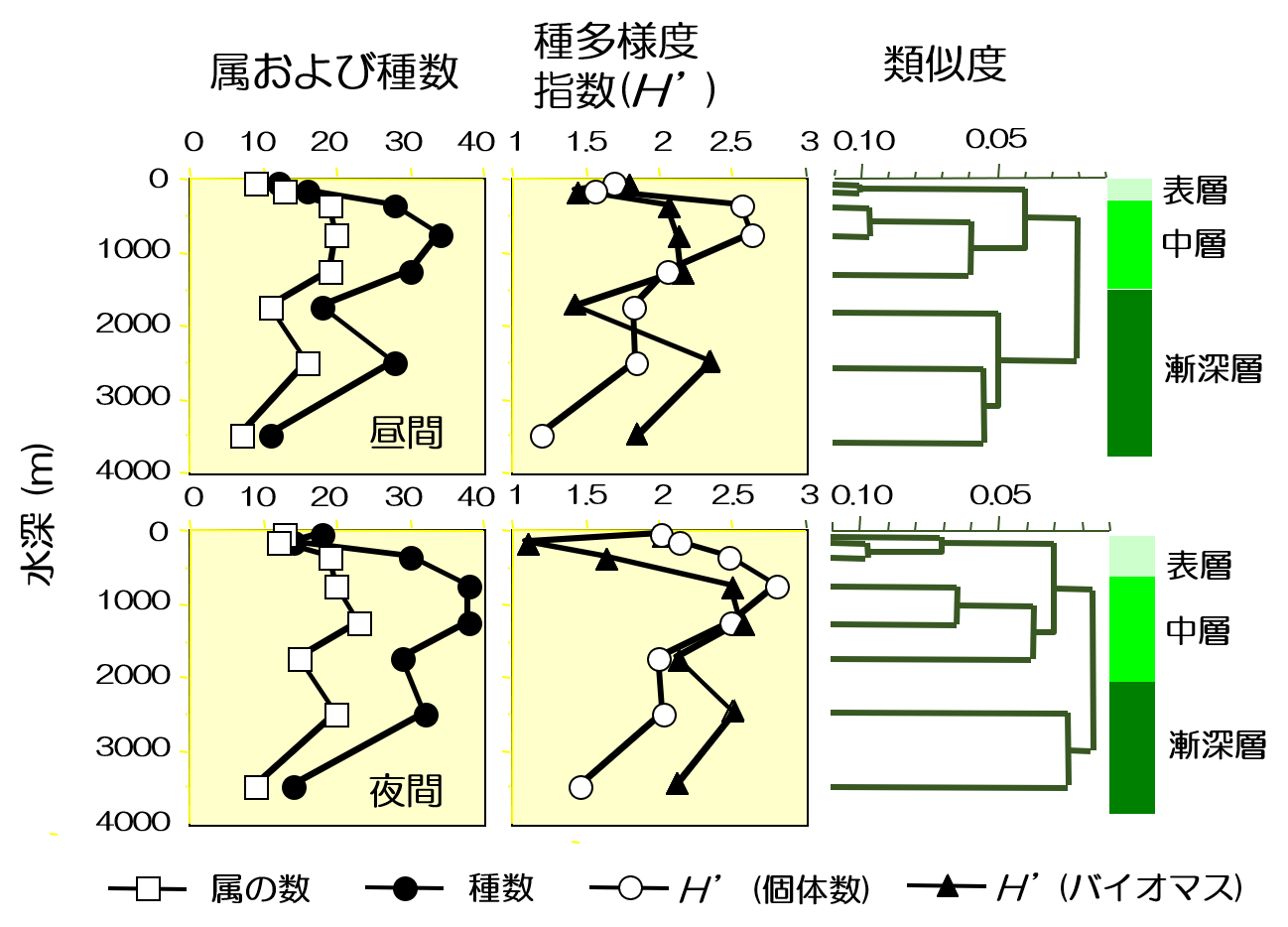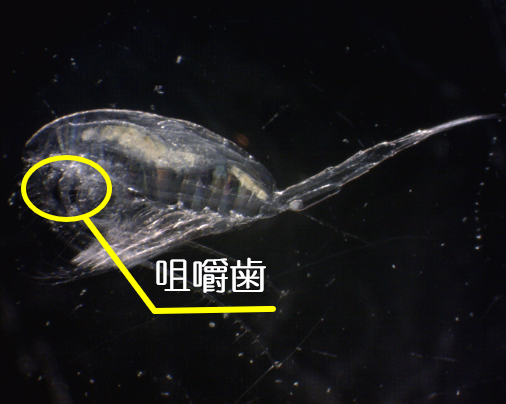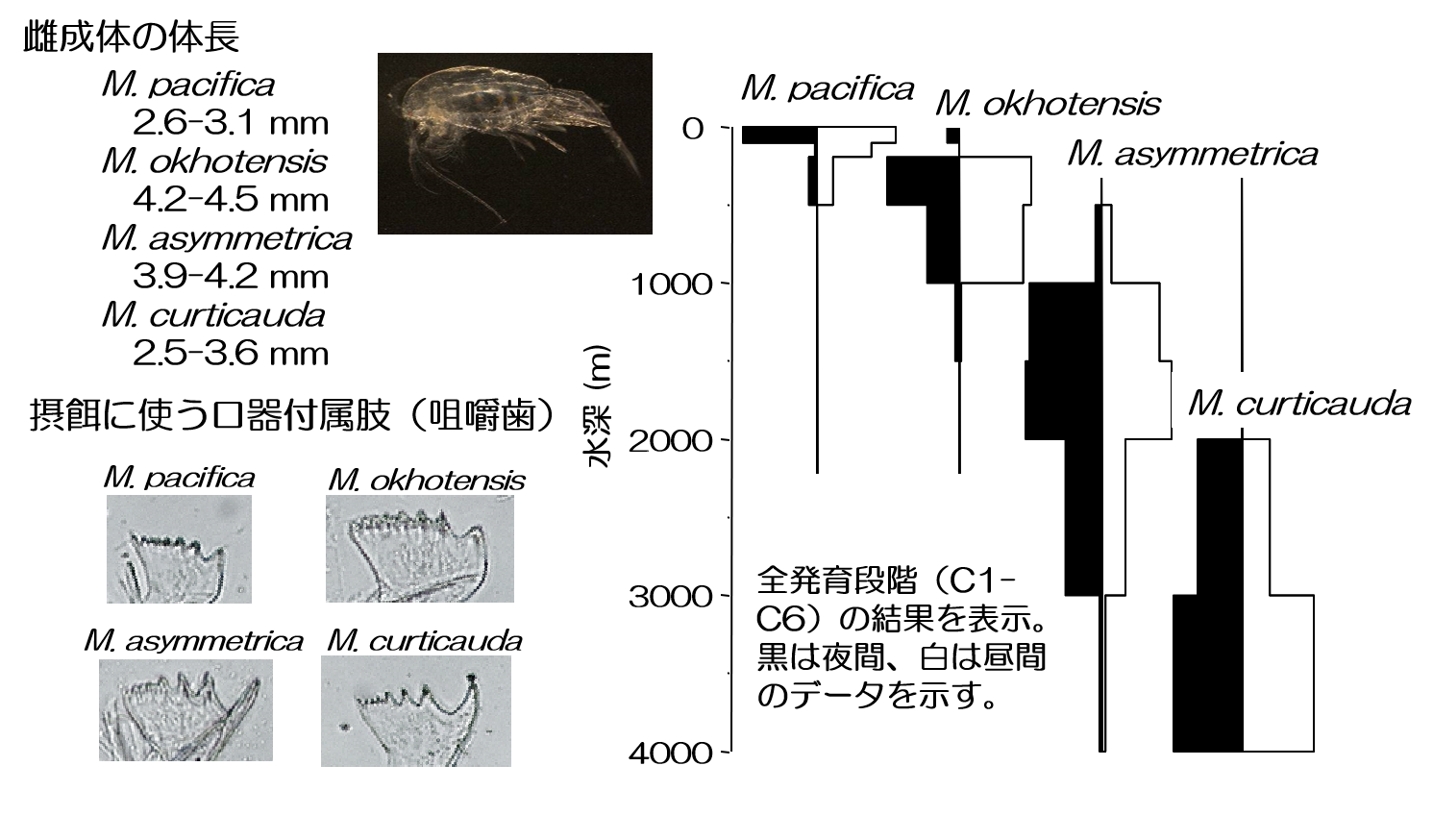
遊泳肢の形状がかい(船などをこぐオール)に似ているので、「カイアシ類」と呼ばれます:
In Japanese, copepods are called "kai ashi" because the shape of swimmerets resembles paddles (paddle is "kai" in Japanese, and "ashi" means "arthropodium" here).
身体の前方にある肢は摂餌に使う、口器付属肢です:
The arthropodium on the front of body are mouthparts used for feeding.
生殖孔から産卵します
They lay eggs from the gonopore.
第一触角は左右にぴんと伸ばして、餌や捕食者を感知する”アンテナ”の役割を果たします
Copepods have their first antennae stretched out to the left and right. They act as "antennas" to detect prey and predators.
口器付属肢:mouthparts, 遊泳肢:swimmerets, 生殖孔:gonopore, 第一触角:first antenna
- Copepods is the most prevalent (about 80% of the population and biomass) crustacean among multicellular zooplanktons in the oceans around the world.
- Copepods is about 0.5 to 10 mm long, and its phagocytosis is a particulate-feeding species that eats phytoplankton and unicellular zooplankton. However, it also includes carnivorous species that feed on other multicellular zooplanktons, and detritus-feeding species that feed on marinsnow and detritus that have settled from the surface.
- Differences in diet and diet are thought to have a major impact on copepods species differentiation, with species richer in the middle layer (200-1000 m). This is thought to reflect the variety of copepods baits in the middle class.




